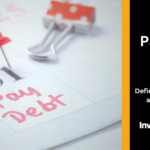What is Realized Volatility?
Realized Volatility is a key financial metric that measures the historical price fluctuations of an asset, typically a stock, currency, or commodity, over a specific period. Unlike implied volatility, which reflects market expectations of future price movements, realized volatility looks backward and quantifies how much an asset’s price has actually varied during a given timeframe.
In simpler terms, realized volatility shows the level of price movement that has already occurred, helping traders and investors assess the risk associated with an asset based on its past behavior.
How to Calculate Realized Volatility?
The calculation of realized volatility is relatively straightforward, typically using the standard deviation of returns over a set period, often daily, weekly, or monthly.
The formula for calculating realized volatility is:

Realized Volatility = σ × √T
In this formula,
- σ (Sigma) is the standard deviation of asset returns.
- T is the time period, often expressed in trading days (e.g., 252 days for a year).
To calculate the standard deviation (σ) of returns:
- Find the daily returns of the asset over the chosen time frame.
- Calculate the mean (average) of these returns.
- Subtract the mean from each return to get the deviation for each day.
- Square the deviations.
- Calculate the average of the squared deviations.
- Take the square root of the average to get the standard deviation.
Finally, multiply the standard deviation by the square root of the time period to annualize the realized volatility (if you’re measuring for a different period).
Example Calculation of Realized Volatility
Let’s say we are analyzing the daily returns of a stock over 5 days. Here’s a simplified example:
- Day 1: Return = 1%
- Day 2: Return = -0.5%
- Day 3: Return = 2%
- Day 4: Return = -1%
- Day 5: Return = 0.8%
Calculating the mean of the returns
Mean= (1% + (−0.5%) + 2% + (−1%) + 0.8%) / 5 = 0.46%
Calculating the deviations from the mean
- Day 1 deviation = 1% – 0.46% = 0.54%
- Day 2 deviation = -0.5% – 0.46% = -0.96%
- Day 3 deviation = 2% – 0.46% = 1.54%
- Day 4 deviation = -1% – 0.46% = -1.46%
- Day 5 deviation = 0.8% – 0.46% = 0.34%
Squaring the deviations
- Day 1: (0.54%)² = 0.2916
- Day 2: (-0.96%)² = 0.9216
- Day 3: (1.54%)² = 2.3716
- Day 4: (-1.46%)² = 2.1316
- Day 5: (0.34%)² = 0.1156
Calculating the average of the squared deviations:
Average squared deviation = (0.2916 + 0.9216 + 2.3716 + 2.1316 + 0.1156) / 5
Average squared deviation = 1.5664
Calculating Standard deviation:
Standard deviation = √1.5664 = 1.25%
Annualize the volatility (assuming 252 trading days)
Realized Volatility = 1.25% × √252 ≈ 19.81%
So, the annualized realized volatility of this stock is approximately 19.81%. This means that, based on the stock’s past price movements, the stock’s price is expected to fluctuate by about 19.81% over the next year, assuming similar market conditions.
Historically, a 19.81% annualized realized volatility means that the stock has had price swings—either up or down—of roughly 19.81% on an annual basis.
Why is Realized Volatility Important?
Realized volatility is a key metric for investors, traders, and analysts because it provides insights into the historical price fluctuations of an asset. Here are several reasons why realized volatility is important:
Risk Assessment
Realized volatility helps investors assess the level of risk associated with an asset. A higher realized volatility indicates more significant price movements, which implies greater risk. Investors can use this information to determine whether an asset aligns with their risk tolerance, whether they are looking for stable investments or willing to take on more risk for potential higher returns.
Performance Evaluation
Realized volatility can be used to evaluate how well an asset or portfolio has performed relative to its risk. For example, two assets may have similar returns, but the one with lower realized volatility is considered a better investment due to its lower risk profile.
Market Behavior Insights
By analyzing realized volatility, traders can better understand market conditions and how an asset behaves over time. High volatility often signals market stress, such as during financial crises or geopolitical events, while low volatility can indicate stability or complacency in the market.
Portfolio Management
Realized volatility is essential for portfolio diversification. Investors can use volatility data to identify correlations between different assets and choose a mix of investments that balances high and low volatility assets. This can help in reducing overall portfolio risk while optimizing returns.
Option Pricing
Volatility is one of the most important factors in pricing options. Since options derive their value from the underlying asset’s potential price movement, knowing the past volatility helps traders estimate the future price movement and price options more accurately. Realized volatility is a critical tool in this process, especially for those using historical data to predict future volatility.
How to Interpret Realized Volatility?
Interpreting realized volatility involves understanding how much an asset’s price has deviated from its average price over a given period. Here’s what to consider:
- High Realized Volatility: A high realized volatility value indicates that the asset has experienced significant price swings during the period, meaning it is riskier and more unpredictable. This may be seen in stocks with major price movements, such as during earnings reports or economic announcements.
- Low Realized Volatility: A low realized volatility indicates that the asset’s price has been relatively stable, suggesting it is less risky. This might be typical for blue-chip stocks or assets in stable industries.
- Consistent vs. Fluctuating Volatility: Steady realized volatility over time may suggest a predictable market environment, while large swings in volatility could indicate market stress, such as during financial crises or other periods of uncertainty.
- Volatility Clusters: Financial markets often experience periods of low volatility followed by sudden spikes. Identifying such patterns helps traders anticipate future price behavior.
What is a Good Realized Volatility?
The “ideal” level of realized volatility depends on the investor’s risk profile and investment goals. Here’s how to evaluate it:
- Low Volatility: Generally considered good for conservative investors or those seeking stability, such as long-term investors in bonds or dividend-paying stocks.
- High Volatility: Attractive to risk-tolerant investors or traders looking to capitalize on price swings in the short term. However, it increases the potential for large losses.
- Industry-Specific Norms: Different industries naturally have different volatility levels. For instance, technology stocks may have higher volatility than utility stocks. Comparing an asset’s volatility to its industry peers provides a more meaningful evaluation.
Limitations of Realized Volatility
While realized volatility is a useful metric for assessing risk and understanding past price movements, it comes with several limitations that investors and traders should be aware of:
Based on Past Data Only
Realized volatility solely reflects historical price movements and does not predict future volatility. While it provides valuable insight into how an asset has behaved in the past, it cannot foresee future market conditions or potential events that might increase or decrease volatility.
No Predictive Power
Unlike implied volatility, which reflects market expectations for future price fluctuations, realized volatility provides no indication of how volatile an asset might be going forward. Market dynamics, such as changes in economic conditions, corporate performance, or geopolitical factors, can cause volatility to change in ways that historical data cannot predict.
Limited Use for Emerging or Unstable Markets
In markets that are emerging, highly speculative, or experiencing sudden instability (e.g., in times of financial crises), past volatility may not accurately represent future risk. In these situations, relying solely on realized volatility might lead to a misleading view of risk.
Timeframe Sensitivity
The period over which realized volatility is calculated significantly impacts its outcome. Short-term fluctuations may skew the results, while long-term data may smooth out important volatility spikes. Therefore, the choice of timeframe needs to be considered carefully to ensure it aligns with the investor’s objectives.
How to Find Realized Volatility?
InvestingPro offers detailed insights into companies’ Realized Volatility including sector benchmarks and competitor analysis.
InvestingPro+: Access Realized Volatility Data Instantly
Unlock Premium Data With InvestingPro 📈💸
Gain instant access to Realized Volatility data within the InvestingPro platform
🛠 Access to 1200+ additional fundamental metrics
🔍 Competitor comparison tools
📊 Evaluate stocks with 14+ proven financial models
Realized Volatility FAQ
How is Realized Volatility different from Implied Volatility?
Realized volatility measures historical price movements, while implied volatility reflects market expectations about future price movements, often used in options pricing.
Can Realized Volatility be negative?
No, realized volatility cannot be negative because it represents the standard deviation of asset returns, which is always a positive value.
Why does Realized Volatility matter for options traders?
Realized volatility helps options traders understand the risk associated with underlying assets, which is crucial for pricing options and making informed trading decisions.
Can Realized Volatility predict future price movements?
No, realized volatility only reflects past price movements. Although it can help identify trends, it does not directly predict future price behavior.
How often should Realized Volatility be measured?
Realized volatility should be measured regularly, at least monthly or quarterly, to track changes in an asset’s risk profile over time.









